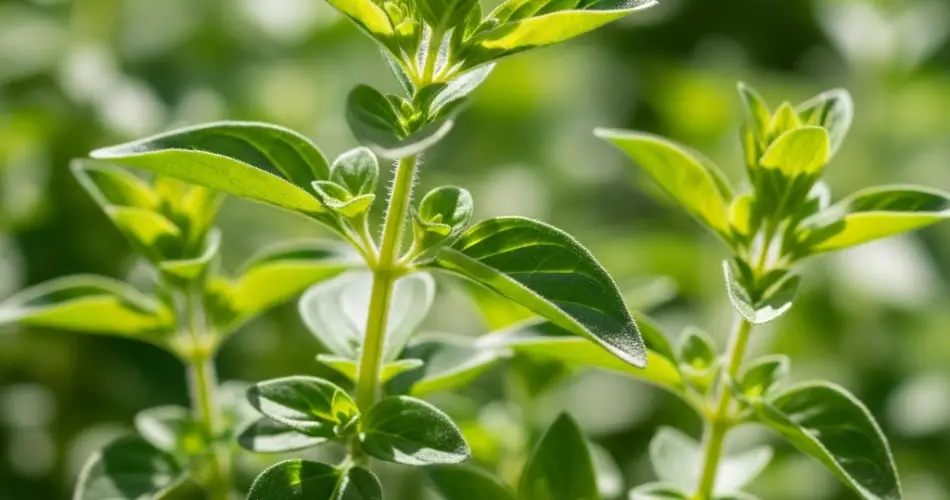Oregano is a wonderfully aromatic and flavorful herb that thrives in many home gardens and container setups. Whether you grow it for cooking, tea, or natural remedies, keeping your oregano plant healthy and bushy ensures a continuous supply of fresh leaves. One of the key practices to encourage dense, leafy growth is regular pruning. Without it, oregano can become leggy, woody, and produce fewer leaves over time.
In this guide, you’ll learn how, when, and why to prune oregano for a fuller, more productive plant all season long.
Why Prune Oregano?
Pruning oregano isn’t just about controlling size—it significantly improves plant health and productivity. Here’s how it helps:
-
Encourages bushy growth: Cutting back stems stimulates the plant to send out side shoots, making it fuller.
-
Improves air circulation: Thinning out excess foliage helps reduce the risk of fungal diseases.
-
Prevents legginess: Unpruned oregano tends to stretch and become woody at the base, which limits leaf production.
-
Extends the harvest: Regular trimming encourages continuous growth, keeping the plant productive longer.
When to Start Pruning
The best time to begin pruning oregano is once the plant has reached about 4 to 6 inches in height and has several sets of true leaves. This usually happens a few weeks after planting or transplanting.
Don’t wait too long to start pruning. Early and consistent trimming sets the stage for a strong, bushy structure. After the initial trim, you can continue pruning every few weeks through the growing season.
Tools You’ll Need
Pruning oregano doesn’t require complicated tools. A small pair of clean, sharp scissors or garden shears will do the job. For occasional light trimming, even your fingers can be used to pinch off the tips.
Make sure tools are sanitized before use to avoid transferring disease between plants.
How to Prune Oregano for Maximum Bushiness
Follow these steps to keep your oregano lush and productive:
1. Pinch or Cut Above a Leaf Node
Start by identifying a leaf node—a point on the stem where two leaves emerge. Make your cut just above this point. This will encourage two new stems to grow from that node, doubling the number of branches.
Always prune at a slight angle to allow water to run off, which helps prevent rot.
2. Trim Lightly and Often
Instead of taking large sections at once, trim oregano regularly and lightly. Aim to remove no more than one-third of the plant at a time. Frequent, gentle cuts stimulate steady growth and keep the plant from becoming sparse or woody.
If you see a branch growing too tall compared to the rest, cut it back to match the plant’s overall shape.
3. Focus on Outer Stems
Cutting back the outer stems first helps maintain an even shape and keeps the center of the plant open, improving air flow and light penetration. This also encourages new shoots from the base.
Deadheading Flowers: Yes or No?
Oregano is a perennial that produces small purple or white flowers, especially in late summer. While these blooms are attractive to pollinators, they can signal the plant to stop producing leaves and start focusing on seed.
If your main goal is harvesting leaves, pinch off the flower buds as soon as they appear. This keeps the plant in vegetative (leaf-producing) mode longer. However, you can leave a few flowers if you’d like to attract bees or collect seeds for future planting.
Pruning After Harvest or in Fall
If you’ve harvested your oregano heavily or if the plant looks leggy by late summer, give it a stronger prune. Cut the stems back to about 2–3 inches above the soil. This hard pruning will stimulate fresh growth and prevent the plant from becoming too woody over time.
In colder climates, prune oregano back in late fall after the growing season ends. Leave a few inches of stem to protect the crown of the plant over winter. In spring, remove any dead stems and encourage new growth with light pruning.
Growing Tips to Support Pruning
To help your oregano thrive alongside regular pruning, keep these care tips in mind:
-
Sunlight: Oregano needs at least 6 hours of direct sunlight daily to grow thick and flavorful.
-
Watering: Water only when the top inch of soil is dry—oregano prefers slightly dry conditions and well-draining soil.
-
Feeding: Oregano doesn’t need heavy fertilizing. Compost or a diluted organic fertilizer once or twice per season is sufficient.
-
Spacing: Give your oregano plant enough room to expand—around 12–18 inches apart if planted in a bed or container.
Conclusion
Pruning is a simple but essential part of oregano care that directly influences the health and appearance of the plant. By trimming early, often, and strategically, you’ll encourage vigorous growth, a bushy shape, and a steady supply of flavorful leaves for your kitchen. Whether you’re growing oregano in a pot on your windowsill or in a raised bed in the backyard, proper pruning will help you get the most out of this hardy, versatile herb.



